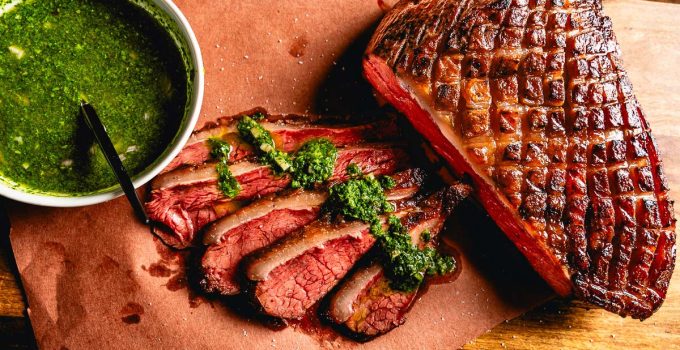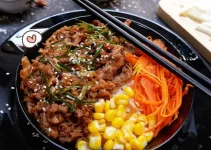Picanha, a prized cut of beef popular in Brazilian cuisine, is renowned for its rich flavor, tender texture, and succulent juiciness. This delectable cut, also known as sirloin cap or rump cap, holds a special place in Brazilian culture and culinary tradition. In this article, we’ll delve into the origins of sirloin cap, its unique characteristics, and how it is prepared and enjoyed in Brazil and beyond.
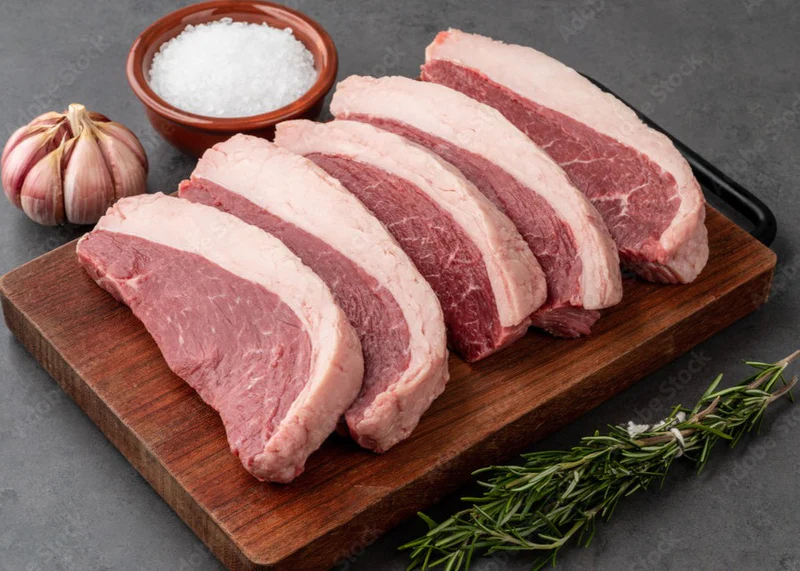
Picanha
Origins and History:
Picanha originates from Brazil, where it is considered one of the most cherished cuts of beef. Traditionally, sirloin cap is derived from the top of the sirloin primal, located near the rump of the cow. While it has long been a staple of Brazilian barbecue culture, sirloin cap has gained international acclaim in recent years, becoming a favorite among meat enthusiasts worldwide.
Characteristics of Picanha:
Picanha is prized for its distinctive triangular shape, generous marbling, and thick layer of fat that surrounds the meat. This layer of fat, known as the “fat cap,” imparts flavor and moisture to the meat during cooking, resulting in a tender and juicy texture. When properly prepared, sirloin cap boasts a rich beefy flavor with a melt-in-your-mouth quality that is second to none.
Preparation and Cooking:
In Brazil, picanha is typically seasoned simply with coarse salt and sometimes garlic before being cooked over an open flame on a skewer or grill. The fat cap is left intact during cooking to baste the meat and enhance its flavor. Picanha is usually served medium-rare to medium, allowing the meat to retain its natural juiciness and tenderness.
Serving and Enjoyment:
Picanha is often served as the centerpiece of a Brazilian barbecue, or churrasco, alongside an assortment of grilled meats, sausages, and accompaniments. In Brazil, it is common to enjoy sirloin cap with traditional side dishes such as farofa (toasted cassava flour), Brazilian-style rice, and vinaigrette salsa. sirloin cap is also delicious when served simply with a side of chimichurri sauce or salsa criolla.
International Popularity:
In recent years, sirloin cap has gained popularity beyond Brazil, thanks to its exceptional flavor and versatility. It has become a favorite cut among chefs and food enthusiasts worldwide, who appreciate its succulent texture and robust beefy flavor. Picanha can be found on the menus of upscale steakhouses, Brazilian restaurants, and barbecue joints around the globe.
Conclusion:
In conclusion, picanha stands out as a true culinary gem, celebrated for its exceptional flavor, tenderness, and versatility. Whether enjoyed as part of a traditional Brazilian barbecue or featured on the menu of a gourmet restaurant, picanha never fails to impress with its rich beefy taste and melt-in-your-mouth texture. As its popularity continues to soar, sirloin cap remains a beloved symbol of Brazilian culinary excellence and a delight for meat lovers everywhere.
Pros and Cons of Picanha: Exploring the Brazilian Beef Sensation
Picanha, a revered cut of beef popular in Brazilian cuisine, has captured the hearts and taste buds of food enthusiasts around the world. Renowned for its rich flavor, tender texture, and succulent juiciness, picanha holds a special place in culinary culture. However, like any food, picanha has its advantages and disadvantages. In this article, we’ll explore the pros and cons of picanha to help you understand both its strengths and potential drawbacks.
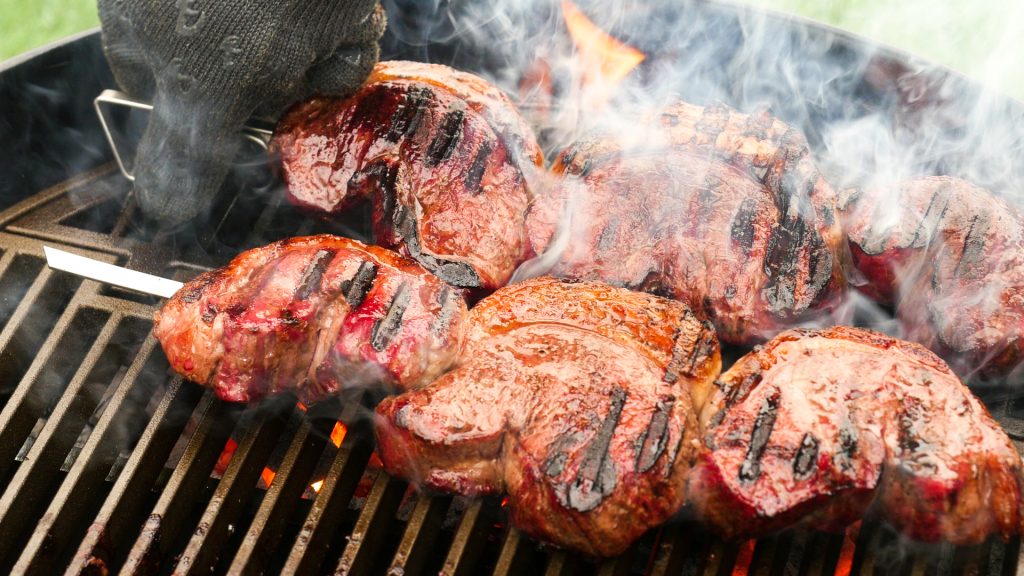
Picanha
Advantages of Picanha:
- Exceptional Flavor: Picanha boasts a robust and savory flavor profile, thanks to its generous marbling and thick layer of fat. When properly seasoned and cooked, sirloin cap delivers a deliciously beefy taste that is sure to delight the palate.
- Tender Texture: Picanha is prized for its tender and succulent texture, which results from the marbling of fat and the proper preparation technique. Whether grilled, roasted, or cooked on skewers, sirloin cap retains its juiciness and tenderness, making it a delight to eat.
- Versatility: sirloin cap is a versatile cut of beef that can be prepared and enjoyed in various ways. Whether served as the centerpiece of a Brazilian barbecue, sliced for sandwiches and wraps, or featured in gourmet dishes, picanha lends itself well to a wide range of culinary applications.
- Cultural Significance: Picanha holds a special place in Brazilian culinary culture, where it is considered a symbol of hospitality, celebration, and tradition. Enjoying sirloin cap with friends and family at a churrasco (Brazilian barbecue) is a cherished ritual that brings people together in joyous celebration.
Disadvantages of Picanha:
- High Fat Content: While the fat cap on enhances its flavor and juiciness, it also contributes to its high fat content. For individuals watching their fat intake or following a low-fat diet, sirloin cap may not be the best choice.
- Price: Picanha is often priced higher than other cuts of beef due to its popularity and demand. While it’s worth the investment for many meat enthusiasts, the cost of may be prohibitive for some consumers.
- Cooking Skill Required: Achieving the perfect doneness and flavor with sirloin cap requires some degree of cooking skill and experience. Overcooking can result in dry and tough meat, while undercooking may leave the fat cap under-rendered and chewy.
- Environmental Impact: Like all beef production, the environmental impact of picanha consumption, including water usage, land usage, and greenhouse gas emissions, is a consideration for environmentally conscious consumers.
Conclusion:
In conclusion, picanha offers a plethora of advantages, including exceptional luna togel flavor, tender texture, versatility, and cultural significance. However, it’s essential to be aware of its potential drawbacks, such as its high fat content, cost, cooking skill required, and environmental impact. By understanding both the pros and cons of picanha, you can make informed decisions about when and how to enjoy this beloved Brazilian beef sensation. Whether indulging in a traditional churrasco or experimenting with gourmet preparations, picanha is sure to delight your taste buds and satisfy your cravings for delicious, flavorful beef.
Picanha Review: Exploring the Brazilian Beef Experience
Picanha, a staple of Brazilian cuisine and a favorite among meat enthusiasts worldwide, has garnered widespread acclaim for its exceptional flavor, tender texture, and versatile culinary applications. As a cherished centerpiece of Brazilian barbecues and a star attraction on restaurant menus, sirloin cap has captivated diners with its rich beefy taste and succulent juiciness. In this review, we’ll delve into the experience of enjoying sirloin cap, from its flavor profile to its preparation and serving methods, to provide an in-depth look at what makes this cut of beef so beloved.
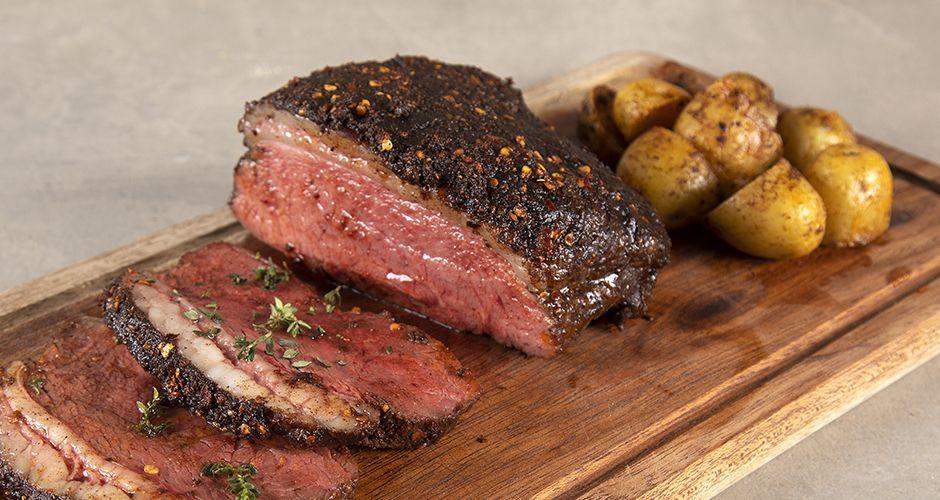
Picanha
Flavor Profile:
Picanha is renowned for its robust and savory flavor, which is derived from its generous marbling and thick layer of fat. The fat cap surrounding the meat imparts richness and moisture during cooking, infusing the beef with a delectable beefy taste and buttery texture. Whether seasoned simply with salt and garlic or enhanced with marinades and rubs, sirloin cap delivers a depth of flavor that is both satisfying and indulgent.
Texture and Tenderness:
One of the most remarkable qualities of sirloin cap is its tender and succulent texture, which results from its well-marbled composition and proper preparation technique. Whether cooked over an open flame on a skewer or grilled to perfection, maintains its juiciness and tenderness, offering a melt-in-your-mouth sensation with every bite. The interplay of meat and fat creates a harmonious balance of flavors and textures that is truly irresistible.
Cooking Methods:
Picanha lends itself well to a variety of cooking methods, each of which highlights its unique qualities and enhances its flavor profile. Grilling over charcoal or wood imparts a smoky depth to the meat, while roasting in the oven produces a juicy and succulent roast. Some enthusiasts prefer to cook picanha on skewers, known as espeto corrido, allowing the fat to baste the meat as it cooks, resulting in a tender and flavorful end product.
Serving and Accompaniments:
When it comes to serving picanha, simplicity is often key. In Brazil, sirloin cap is typically sliced thinly against the grain and served medium-rare to medium, allowing the natural flavors of the beef to shine. Traditional accompaniments such as farofa (toasted cassava flour), Brazilian-style rice, and vinaigrette salsa complement the rich flavor of sirloin cap and add depth to the dining experience. Chimichurri sauce, salsa criolla, or a squeeze of fresh lime juice can also enhance the flavor of sirloin cap and provide a refreshing contrast to its richness.
Conclusion:
In conclusion, picanha offers a culinary experience like no other, with its exceptional flavor, tender texture, and versatile cooking options. Whether enjoyed as part of a Brazilian barbecue feast or featured on the menu of a gourmet restaurant, sirloin cap never fails to impress with its delectable taste and melt-in-your-mouth texture. From its rich beefy flavor to its succulent juiciness, sirloin cap is sure to delight meat enthusiasts and food lovers alike, making it a worthy addition to any dining experience.
Read More Article About “Earth Hour 2024: Illuminating Climate Action in the Dark“

